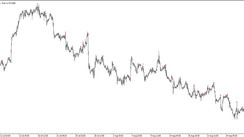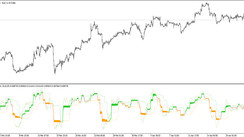As we suggested in our recent review, "the DXY dollar index may soon break a two-year high and rise above 103.00." And during today's Asian trading session, the DXY reached 103.71 after the Bank of Japan kept its monetary policy unchanged, leaving the key rate at -0.1% and the yield target for 10-year government bonds near zero. The bank also signaled more possible easing, also saying it would buy 0.25% government bonds every business day to keep yields below that level. The yen fell sharply today. Recall that the share of the yen in the DXY dollar index is approximately 13.6%. As of today, the yen is down nearly 2% against the dollar, and the USD/JPY hit a new high since May 2002 near 131.00.
Today, the euro also continues to decline. Its share in DXY is 57.6%. The euro is under strong pressure from accelerating inflation, while the ECB takes a wait-and-see attitude, and against the backdrop of deteriorating macro data coming from Europe. In particular, the index of consumer confidence in Germany, published yesterday, fell in April to -26.5 points from -15.7 points a month earlier, and the index of consumer confidence in France - from 90 to 88 points.
As noted in the ECB Economic Bulletin published today, “the conflict (in Ukraine) is undermining business and consumer confidence, also due to the uncertainty that has followed the conflict,” and “support for fiscal and monetary policy remains critical, especially in this complex geopolitical situation".
Of the news for today, which will cause an increase in volatility in the market and in dollar quotes, it is worth highlighting the publication (at 12:30 GMT) of a preliminary estimate of the US annual GDP. This indicator is one of the key (along with data on the labor market and inflation) for the Fed in terms of its monetary policy. If the data points to a decline in GDP in the 1st quarter of 2022, the dollar could come under pressure. Forecast: +1.1% (versus +6.9%, +2.3%, +6.7%, +6.3% in previous quarters of 2021).
But even if the US GDP data does not live up to market expectations, it will not be able to reverse the Fed's intentions to decisively curb rising inflation (US annual inflation rose to 8.5% in March, reaching its highest rate in the last 40 years), and the accelerating divergence of the curves reflecting the direction of the monetary policies of the Fed and other major world central banks will contribute to dollar purchases and the growth of its DXY index.





